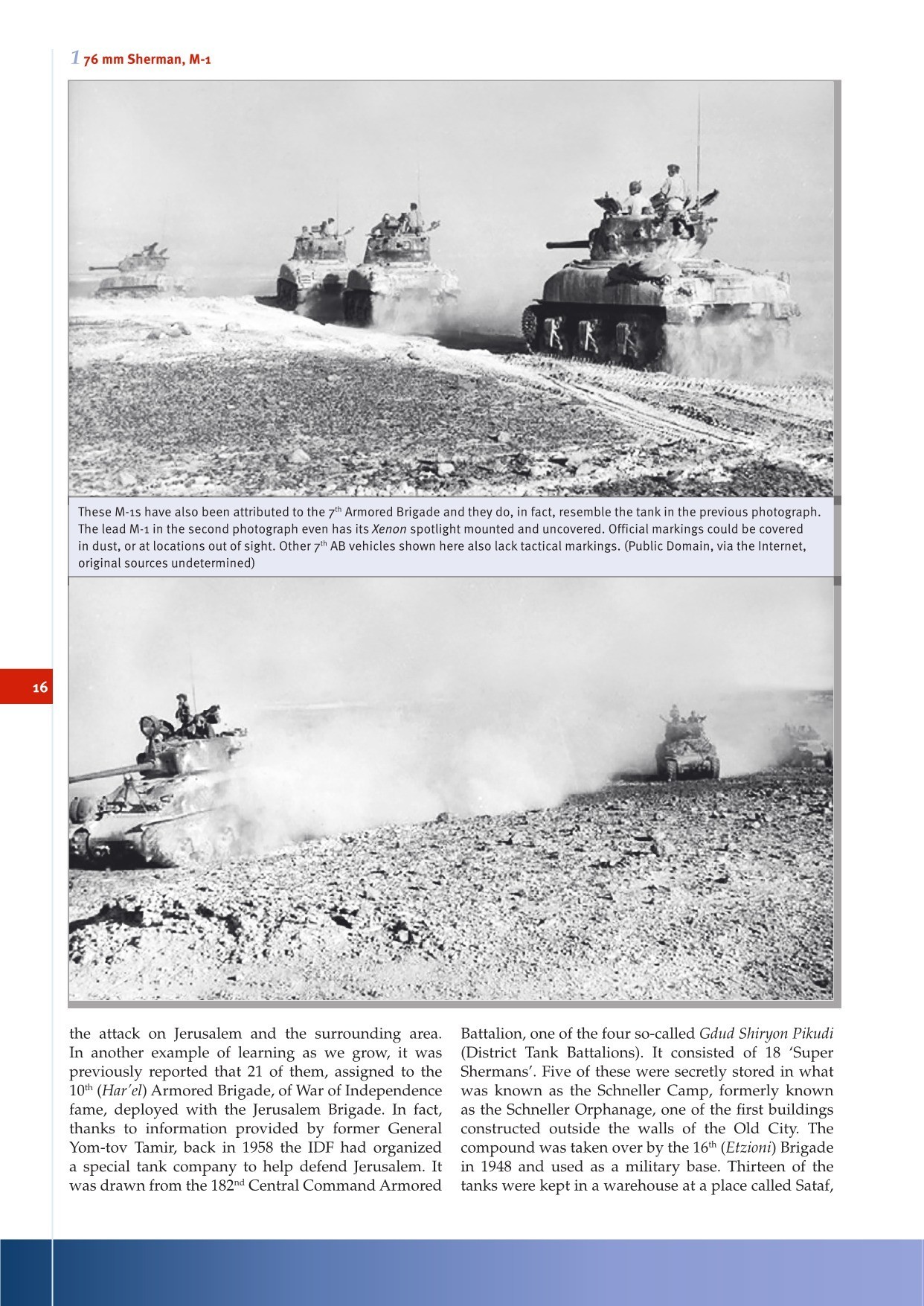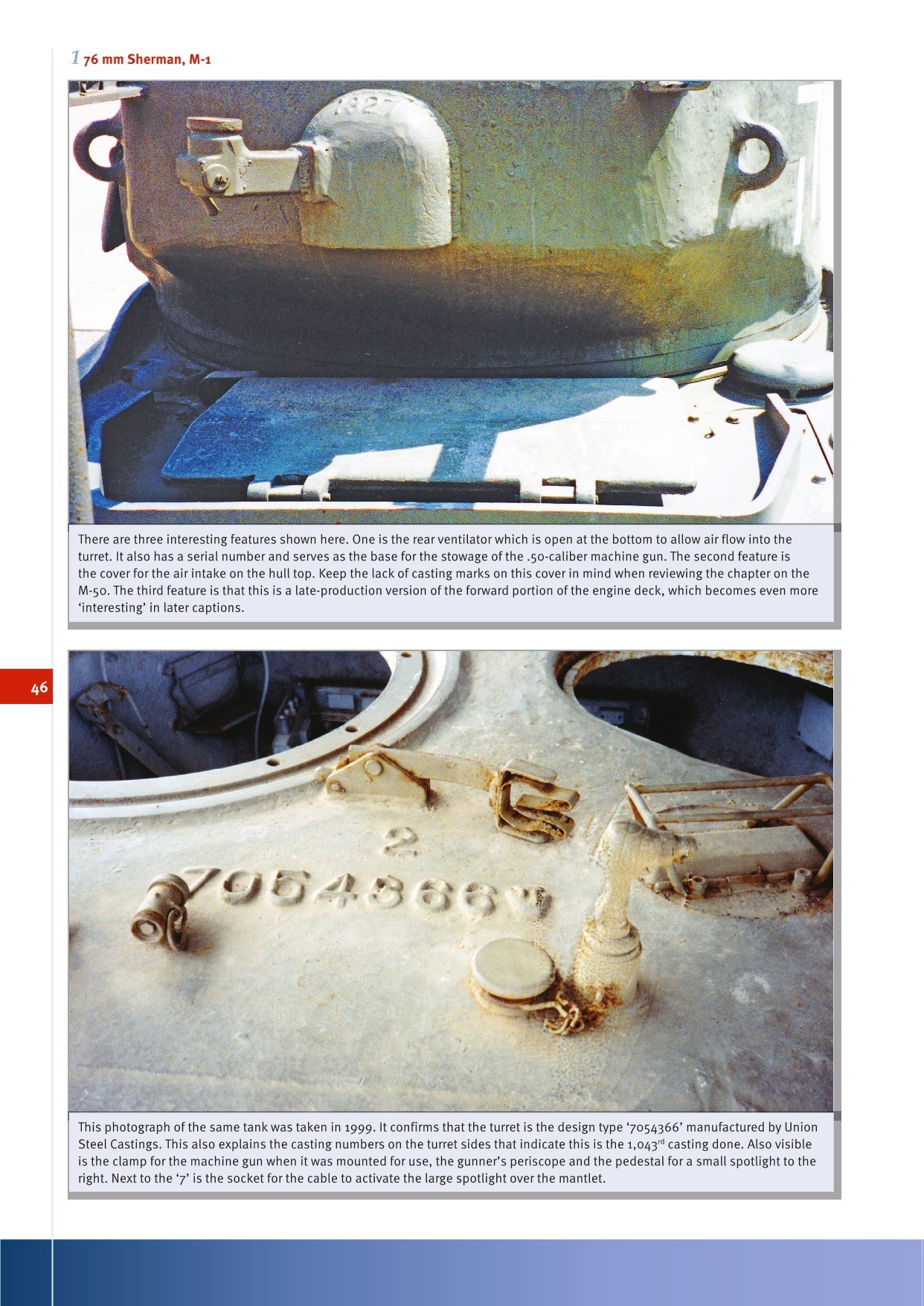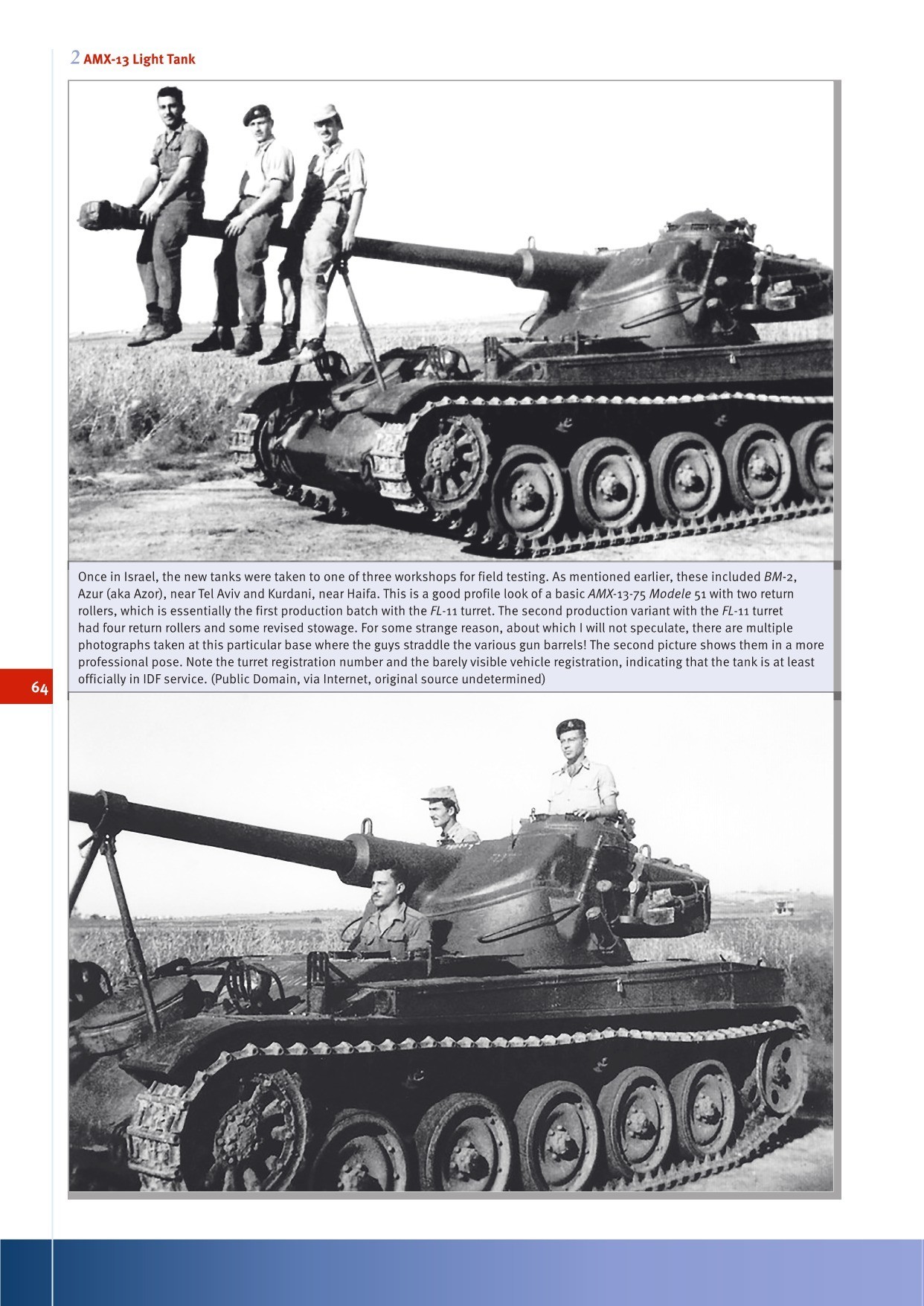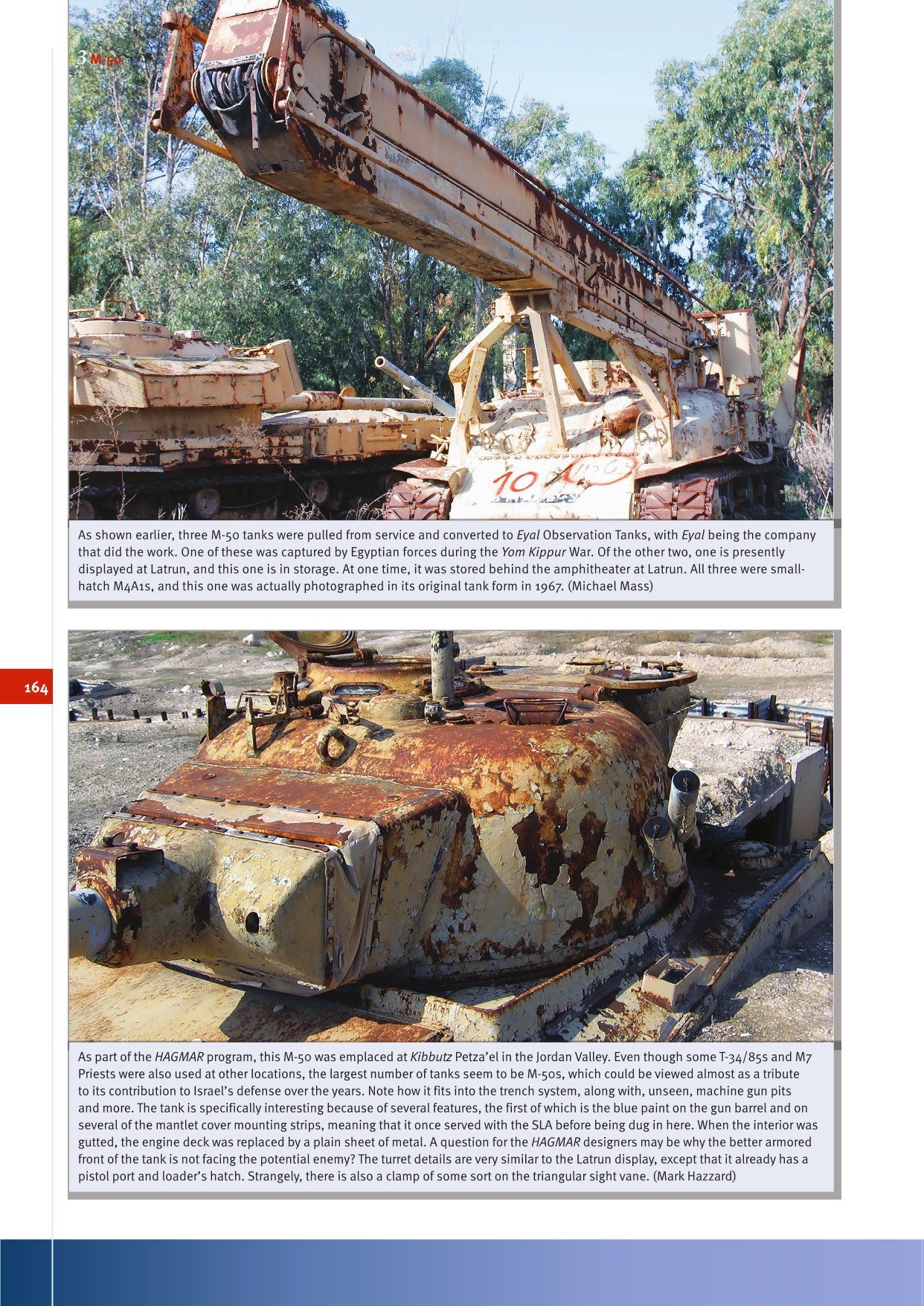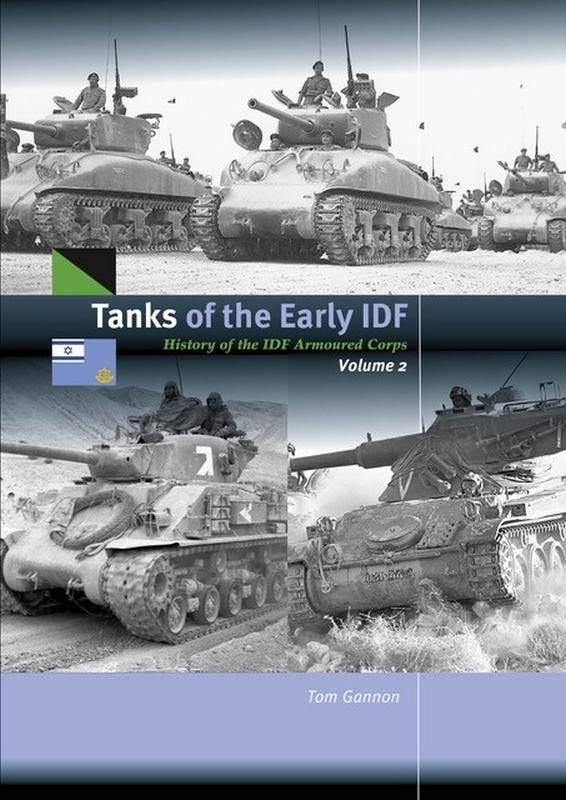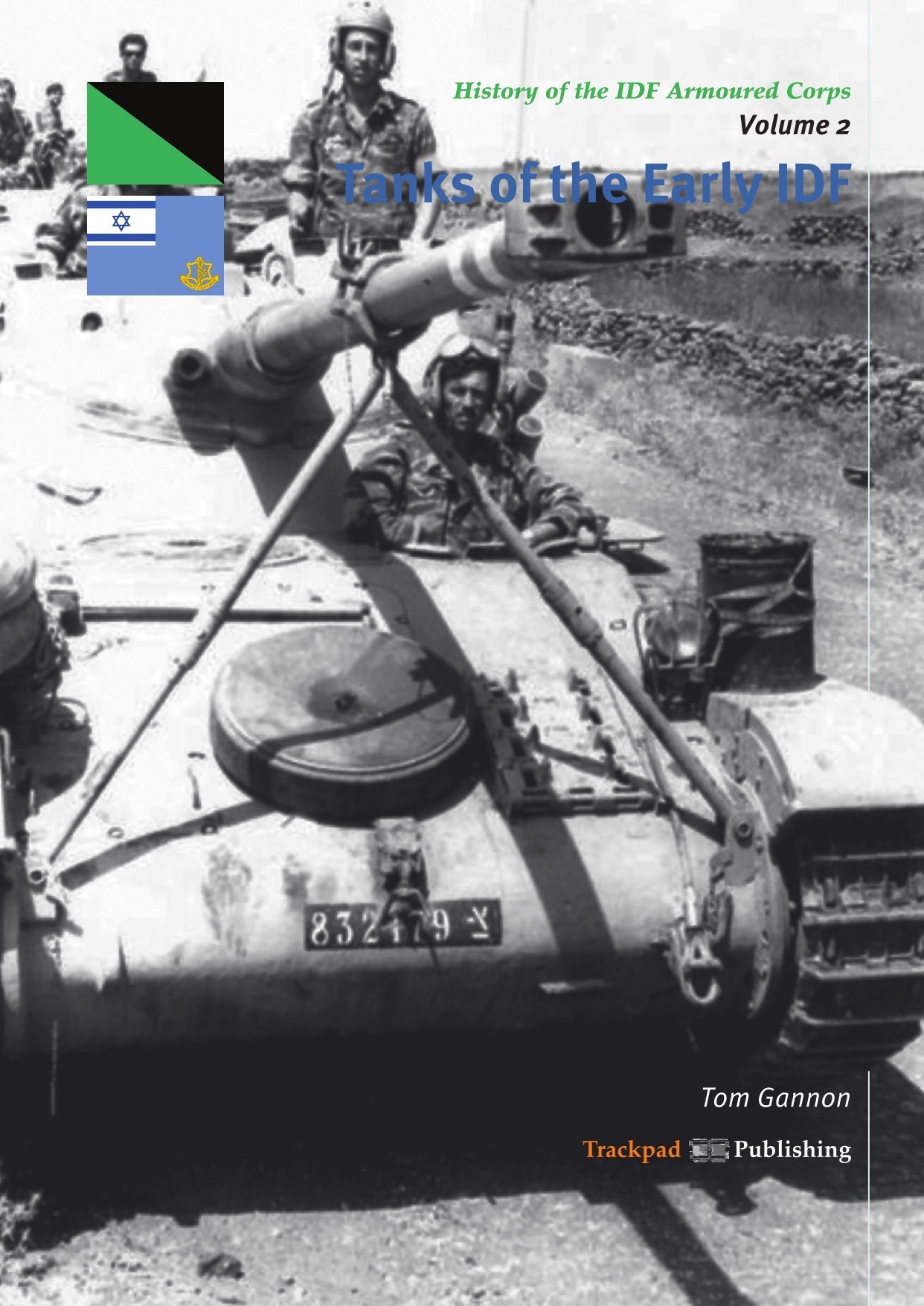

Brief history
The history and development of tanks of the Israeli Army, from their first use after World War II in the establishment of the State of Israel after the end of the British Mandate, and into the Cold War and what today is considered the modern era.
Before Israel gained independence in 1948, neither Israel nor the Arab nations surrounding it had many tanks. The Arabs and the Israelis had to find their weapons through arms dealers or from any country that would Before Israel gained independence in 1948, neither Israel nor the Arab nations surrounding it had many tanks. The Arabs and the Israelis had to find their weapons through arms dealers or from any country that would supply them.
A Palmach patrol in the Negev
Palmach M4 Sherman tank leading a convoy.
The first armoured tanks and vehicles in Israel were, like many other countries, imported or based on others' designs; but eventually developed their own. But in Israel, plans to import them began before the country was even formed, and rudimentary armoured cars and trucks were prepared in secret. The Palmach was an elite fighting force of the Haganah, the underground army of the Yishuv (Jewish community) and had been established on 15th May 1941. By the outbreak of the Israeli War for Independence in 1948, it consisted of over 2,000 men and women in three fighting brigades.
Following the United Nations General Assembly vote for the Partition Plan for Palestine on 29th November 1947, the Jewish forces started to build and procure mobile armoured cars and supply trucks and to purchase and bring in tanks and a large number of half-tracks to prepare for the termination of the British Mandate and Israeli proclamation of statehood on 14 May 1948. During this period, the Jewish and Arab communities under the British Mandate clashed with only light arms, while the British intervened only on an occasional basis during their withdrawal.
From January onwards, operations became increasingly militarised. Several Arab Liberation Army regiments infiltrated into Palestine, each active in a variety of distinct sectors around the different coastal towns. They consolidated their presence in Galilee and Samaria. The Army of the Holy War, under the command of Abd al-Qadir al-Husayni, came from Egypt with several hundred men. Having recruited a few thousand volunteers, al-Husayni organised the blockade of the 100,000 Jewish residents of Jerusalem.
Contents
Introduction
1. 76 mm Sherman, M-1
2. AMX-13 Light Tank
3. M-50
The Author
Tom Gannon was born in January 1949, Tom grew up near Baltimore, Maryland in the United States of America. A business credit manager by profession, his hobby interests include armour modelling and researching Sherman tanks and of course the Israeli Defence Forces. He is a regular visitor to various internet armour discussion forums and has presented seminars on armour subjects at model shows in the US.
The book is a softback glued spine with a pagination of 168 the book is a picture heavy book with plenty of information about the pictures
Review
This is a subject that is not only close to my heart but is also fascinating to say the least, Trackpad publishing have published some amazing books over time some of these are on the Israeli Defence Force. This book is on the 76mm Sherman, AMX-13 Light Tank, and the M-50. This is a picture heavy book which is one of those books that you keep reading from the moment you pick it up. The first colour picture of the 76mm Sherman M-1 was a tank from France.
It was not long before but after the salvaged ex-British Army M4A2 (Sherman III) Meir, the IDF acquired tanks from a variety of sources, beginning with the famous ‘Kafkafi' batch of de-militarised Sherman's from Italy an order of 100 was made. The first thirty arrived mostly (but not all) 105mm tanks were re-armed with 75mm gun, however, Italy at this point cancelled or banned the deal.
Reading through the chapter of the Sherman 76mm Sherman, M-1 so much information is included in this chapter with information that I found fascinating like the Anglo/French/ Israeli campaign to reopen the Suez Canal, recently closed to international shipping by Egypt in July 1956. Known as Operation Musketeer once the fighting actually started the press changed this to the Sinai Campaign, what I found particularly interesting about this was Operation Mivtza Jonah involving the unloading of recently purchased tanks 120 AMX-13 light tanks and 20 M4A1 (76) Sherman's (Sherman IIA), and also other vehicles including SP artillery and necessary supplies onto the beach north of the Kishon River, near Haifa, in July 1956 and trying to do this without alerting the Egyptians!!! Fantastic reading. As with all of the Trackpad publishing, these are all picture heavy books.
Chapter 2 AMX-13 Light tank officially designated Char 13-75 this is a light tank rather than tank destroyer (tell that to all who play World of Tanks and face an AMX -12 or 13?) lightly armoured and fast, with a more powerful gun relative to its armour. This was along-barrelled 75 mm gun mounted in an innovative Oscillating turret, with an auto loader.
Once in Israel, the new tanks Tel Aviv and Kurdani, near Haifa. There are several pictures showing good profile look of the basic AMX-13-75 Finally when Moshe Dayan went to France for himself for a second demonstration and after this he became Chief of Staff of the IDF, only then was an agreement reached to purchase the first 30 AMX-13s. Essentially, the IDF adapted the tank’s original concept of airborne support to the reconnaissance role and use as a mobile anti-tank gun.
Like chapter 1 there are some remarkable pictures a couple that caught my eye was seeing loads of children running up to the tank sand climbing on them with soldiers showing them different weapons and ammo which include a picture of a little lad standing there holding on to the tip of a 75 mm round with the look of amazement on his face with the young IDF soldier showing him a smoke grenade.
Plenty of pictures showing the AMX-13 doing a lot of parades again a time to see some of the tanks especially side profiles
Some close-up pictures of the AMX-13 like the walk around, open hatches, grilles plenty of pictures all in colour, so if like me you have one in a stash you may just find lots of good detail shots for your build.
The last chapter covers the M-50, an old French publication identified the M10 possibly post-World War II Wolverine a prototype as one with the large bolts on both the turret and hull plus the early shot showing short counterweight on the back.
The other idea behind the Phinas Lavon Minister of defence, was interested in the power of the 75 mm gun from the AMX-13 to the point of using it in the Sherman, since they already had the additional penetration abilities of the 76 mm gun in the M-1, it was intended to do so in the earlier round turret, of which there were all ready a number in service, or on the way. Since the British had already been successful, installing a larger more powerful gun in the turret when they produced the Firefly in World War II.
Conclusion
It is hard to think of the right words to say about this latest offering from Trackpad publishing IDF Early Tanks Vol 12 I love everything, IDF and I have read this three times now the pictures are simply spot on. Each of the pictures have a wealth of information on them and some of it is so interesting full of facts about what is going on within the pictures. From a modelling point of view it is fair to say that the M-51 Super Sherman, M-51 Isherman and the Academy M113 Zelda and M113 Fitter in the early days were probably the most favoured kits by us modellers at the time. So if you are looking at building one of the Sherman Israeli tanks or the AMX then I would completely recommend this offering from Trackpad Publishing not only is it a great read it is also a picture heavy book (so some great ideas for picking out accuracy and dioramas then there is the close up pictures almost like a walkaround for further pictures) All in all a genuine great read keep them coming Trackpad Publishing, like to thank Michael Shackleton for this copy.


